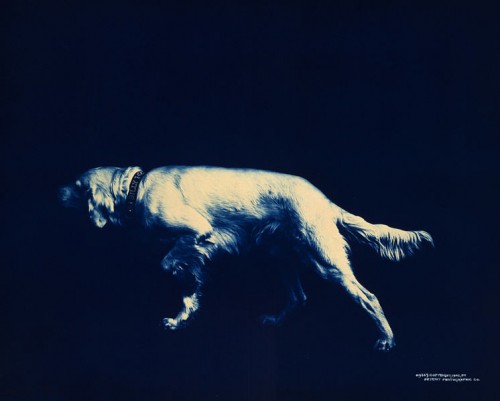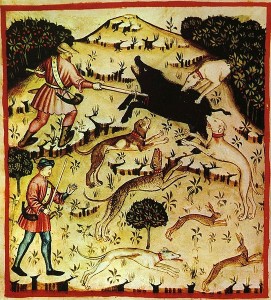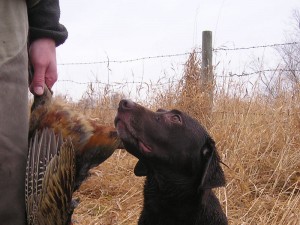 The morning begins. I’ve been awake a good hour but I’m not really, truly awake until I reach the woods with my husband and our dog Max. In the dappled light of late spring, with soft green leafdom almost enveloping us, we slip him loose from the leash. Max lifts his head. He catches a whiff of something interesting and disappears around a bend. Ahead, maybe a third of a mile or so, a few scraps of take-out lie on the forest floor. Max, a four-year-old Labrador retriever, tracks them down effortlessly, expertly, among the blackberry canes and the maples, scouring for the last crumbs as we catch up to him.
The morning begins. I’ve been awake a good hour but I’m not really, truly awake until I reach the woods with my husband and our dog Max. In the dappled light of late spring, with soft green leafdom almost enveloping us, we slip him loose from the leash. Max lifts his head. He catches a whiff of something interesting and disappears around a bend. Ahead, maybe a third of a mile or so, a few scraps of take-out lie on the forest floor. Max, a four-year-old Labrador retriever, tracks them down effortlessly, expertly, among the blackberry canes and the maples, scouring for the last crumbs as we catch up to him.
 Until Max came to live with us, I never really noticed the moveable feast on suburban streets and park trails. My eyes must have glossed over it, the half-eaten apples, the barely tasted bagels, peanut butter sandwiches, French fries, pizza crusts, candies, dropped or discarded, wrapped in paper napkins, tucked discreetly under bus-stop benches or spilled along the sidewalk fronting a grocery store. Now I see it all: Max hunts for it unceasingly on our walks. Bred for hunting and retrieving ducks, he now ferrets out abandoned food scraps.
Until Max came to live with us, I never really noticed the moveable feast on suburban streets and park trails. My eyes must have glossed over it, the half-eaten apples, the barely tasted bagels, peanut butter sandwiches, French fries, pizza crusts, candies, dropped or discarded, wrapped in paper napkins, tucked discreetly under bus-stop benches or spilled along the sidewalk fronting a grocery store. Now I see it all: Max hunts for it unceasingly on our walks. Bred for hunting and retrieving ducks, he now ferrets out abandoned food scraps.
But this almost uncanny ability to detect and track down food, whatever form it may take and wherever it may be, is probably the very foundation of the very ancient human-canine bond: Indeed, it may even account for the success of our species in Paleolithic Europe. In a new article published in American Scientist, Penn State paleoanthropologist Pat Shipman proposes that the possession of hunting dogs may have given modern humans a decisive demographic advantage over rival Neanderthal bands.
Several studies, she notes, support this contention. Recent calculations by a pair of Cambridge University archaeologists, for example, revealed that modern human populations swelled tenfold in Europe between 45,000 years ago and 35,000 years ago. At the same time Neanderthal numbers began falling dramatically, hitting rock bottom– extinction–around 25,000 years ago. Why? Fossil studies of canine skulls suggest that our human ancestors began domesticating wolves during this key period: Homo sapiens, in particular, seem to have become exceedingly fond of these new hounds. In one instance, a modern-human mourner tucked a bone into a dead dog’s mouth.
 Like Max, the early canines must have been masters at tracking down food. In one recent study, Finnish researchers examined the success rates of hunters who employed dogs, specifically Norwegian elkhounds and Finnish spitzes, to assist in hunting moose—surely one of the best modern parallels to hunting mammoths in Paleolithic Europe. The dogs had little difficulty finding moose, and by barking loudly they immobilized the prey and brought human hunters running. Men who went out hunting with elkhounds or spitzes returned home with 28.8 pounds of meat per person for each day in the field. Those who had no dogs returned with just 18.5 pounds.
Like Max, the early canines must have been masters at tracking down food. In one recent study, Finnish researchers examined the success rates of hunters who employed dogs, specifically Norwegian elkhounds and Finnish spitzes, to assist in hunting moose—surely one of the best modern parallels to hunting mammoths in Paleolithic Europe. The dogs had little difficulty finding moose, and by barking loudly they immobilized the prey and brought human hunters running. Men who went out hunting with elkhounds or spitzes returned home with 28.8 pounds of meat per person for each day in the field. Those who had no dogs returned with just 18.5 pounds.
It’s easy to see how this may have played out in Paleolithic Europe. The more game modern humans and their dogs brought home, the more babies women could have and the more breast milk they could supply to their infants. And as modern human bands grew larger in size and better fed, they may have outcompeted neighboring Neanderthals in Europe, or so Shipman hypothesizes.
Existing studies still fall far short of proving these contentions, but I find Shipman’s ideas intriguing. Moreover, they remind me of a paper that maverick American archaeologist Stuart Fiedel published a few years ago on the role dogs may have played in the peopling of the Americas. Fiedel thinks that the earliest Asian migrants brought dogs on their great journey to the New World—dogs that assisted in tracking game and retrieving waterfowl in proglacial lakes; dogs that hauled sledges or travoises loaded with food and hides; dogs that served as camp sentries in a wilderness inhabited by lions, short-faced bears and other large carnivores.
If Fiedel and Shipman are on to something here, I think researchers will need to take a new look at the role of dogs in ancient hunting cultures. Suddenly, best friend doesn’t really seem to cover it.
Photos and Illustrations: Profile on a hunting dog signalling steady on point, by William Henry Jackson, 1902; Tacuina sanitatis (XIV century); Hunter and Dog with Their Catch, by Blaine Hansel
2 thoughts on “Turning Wolves into Hounds”
Comments are closed.